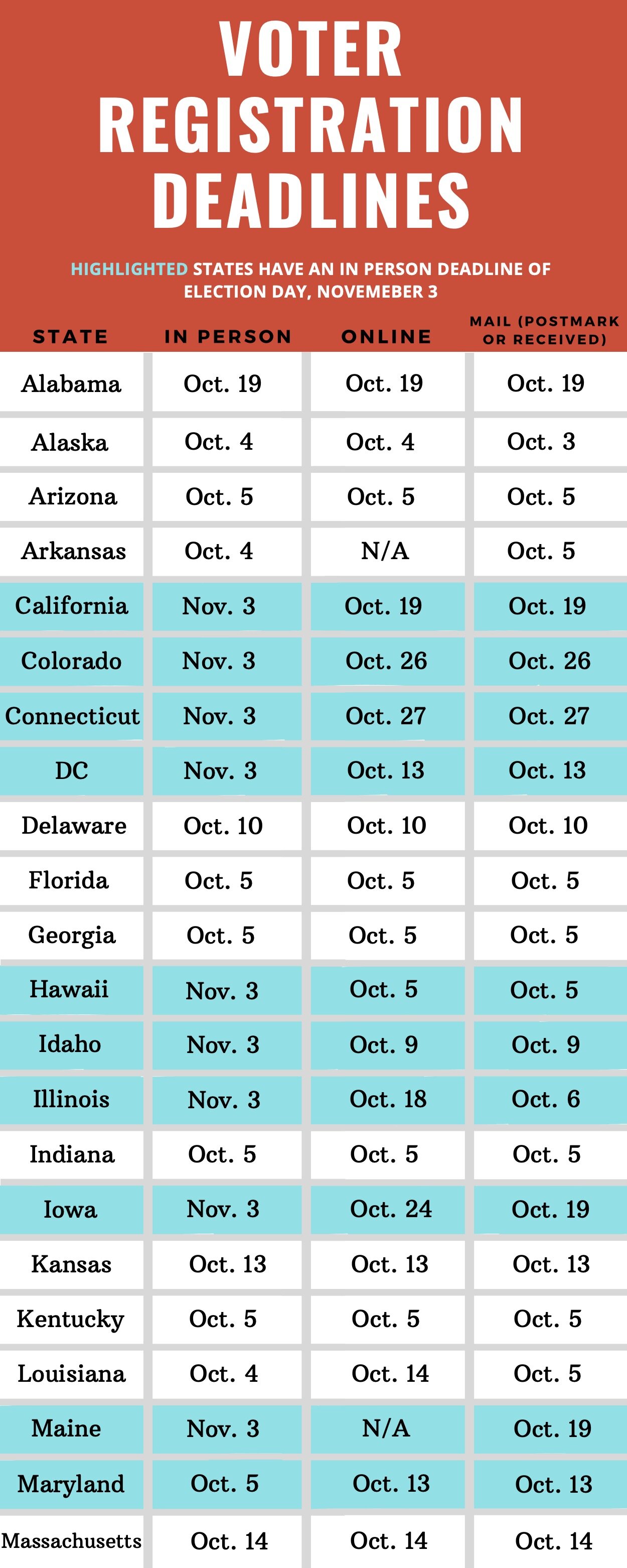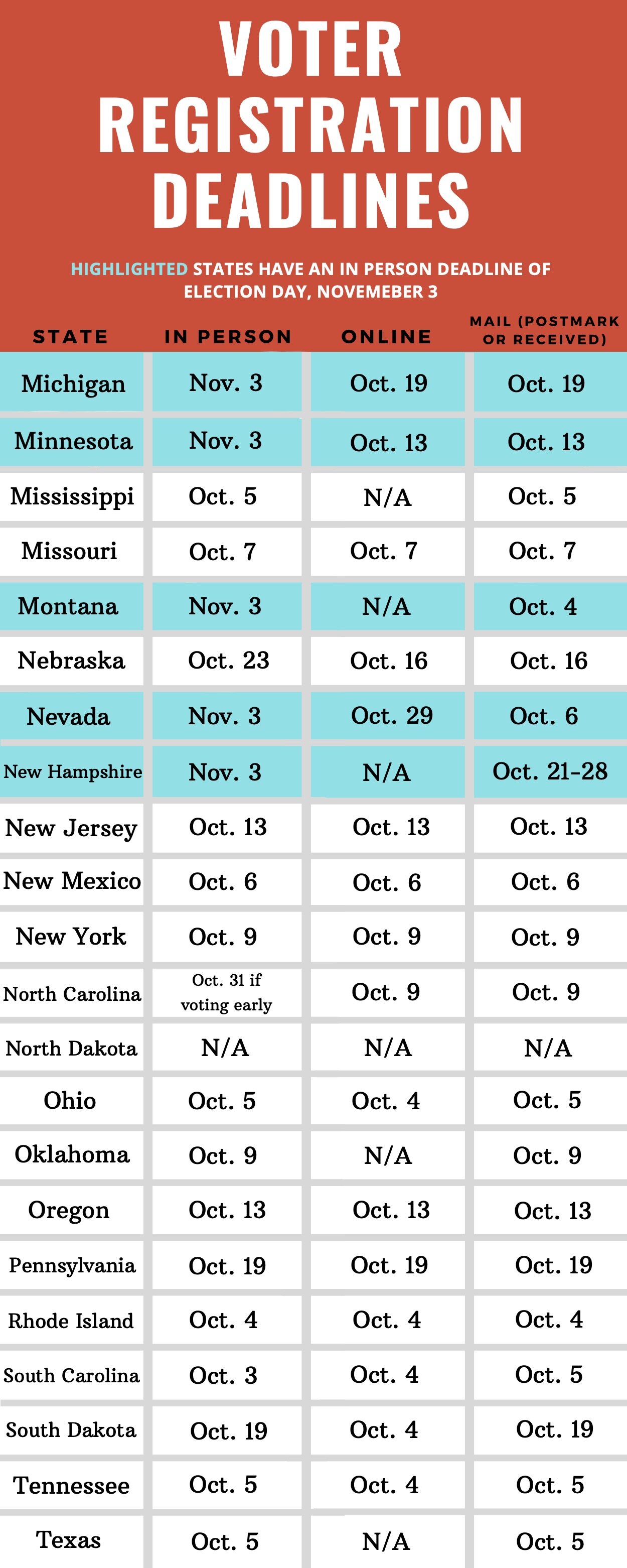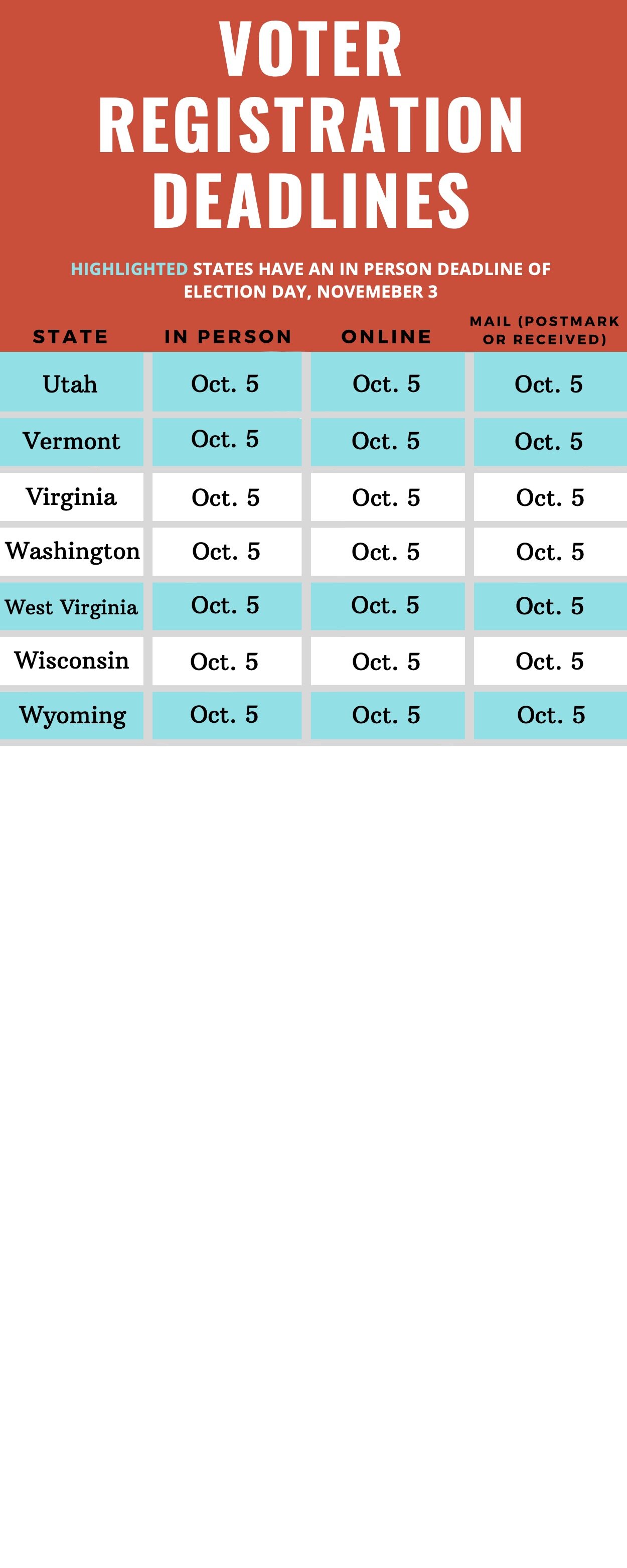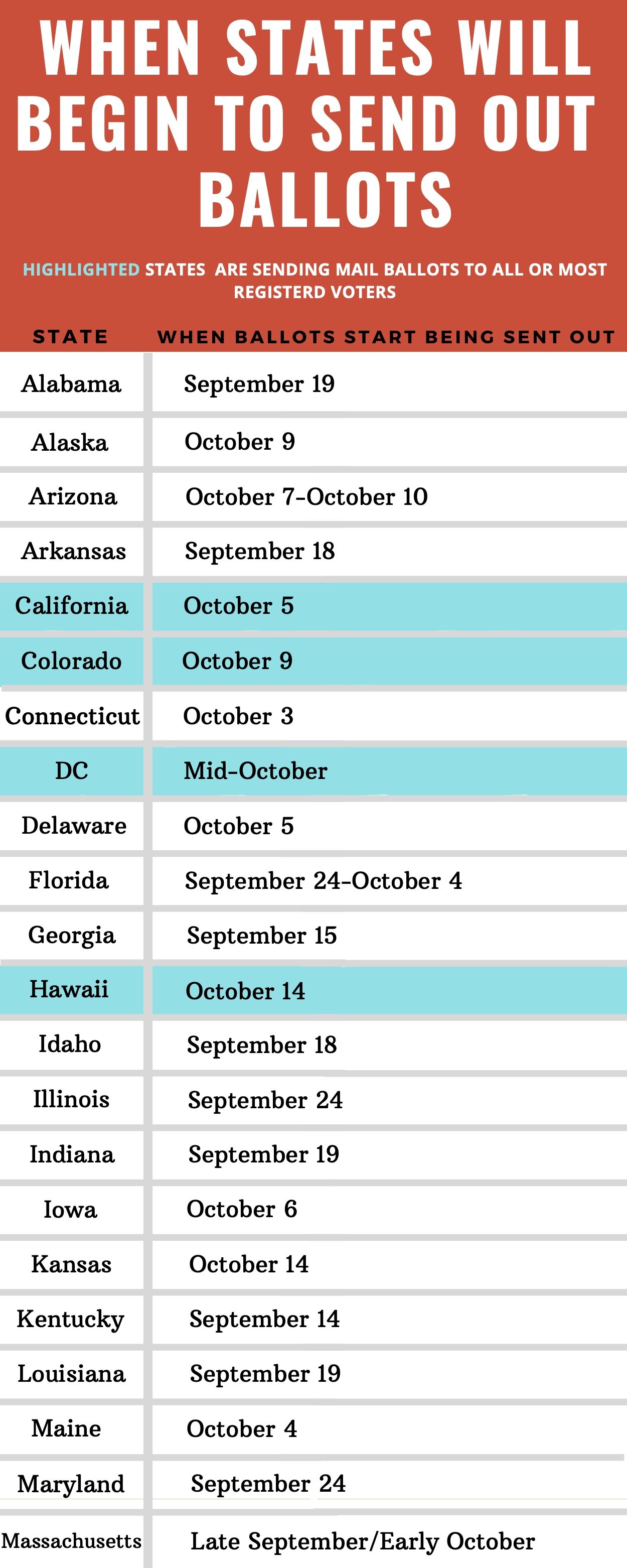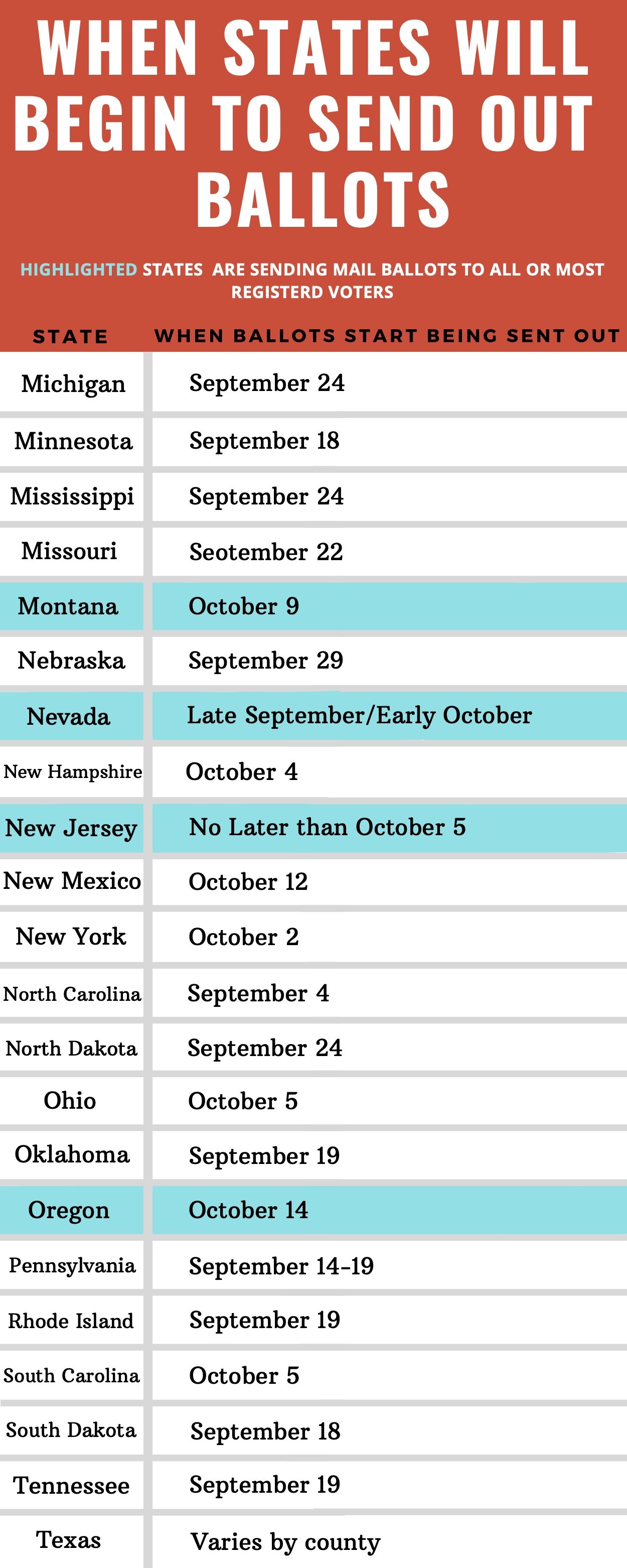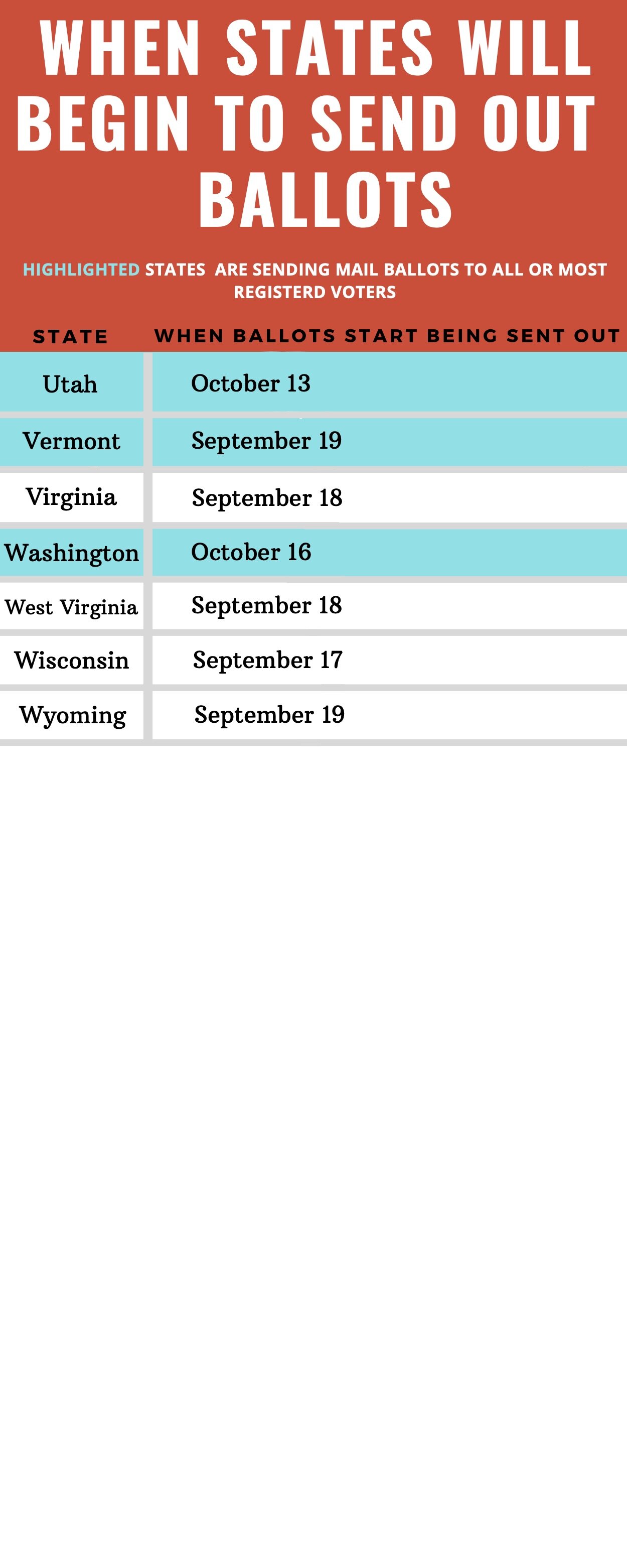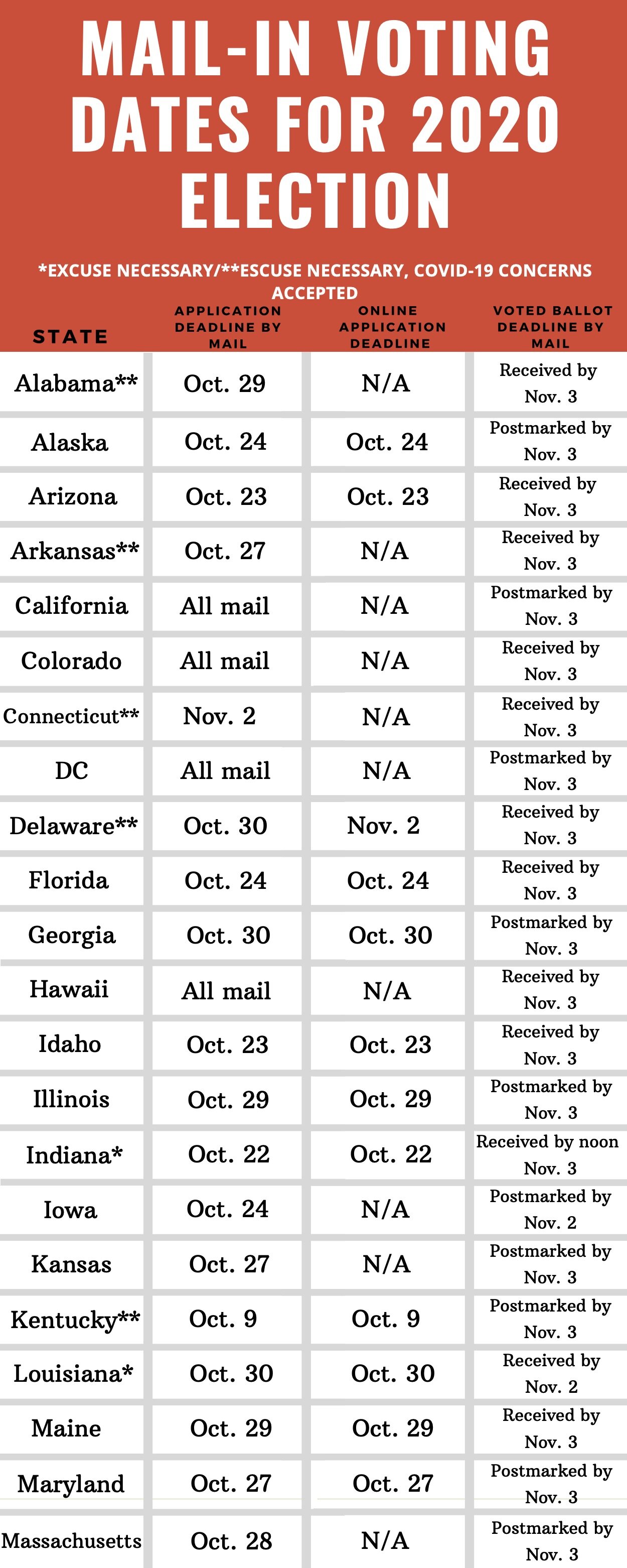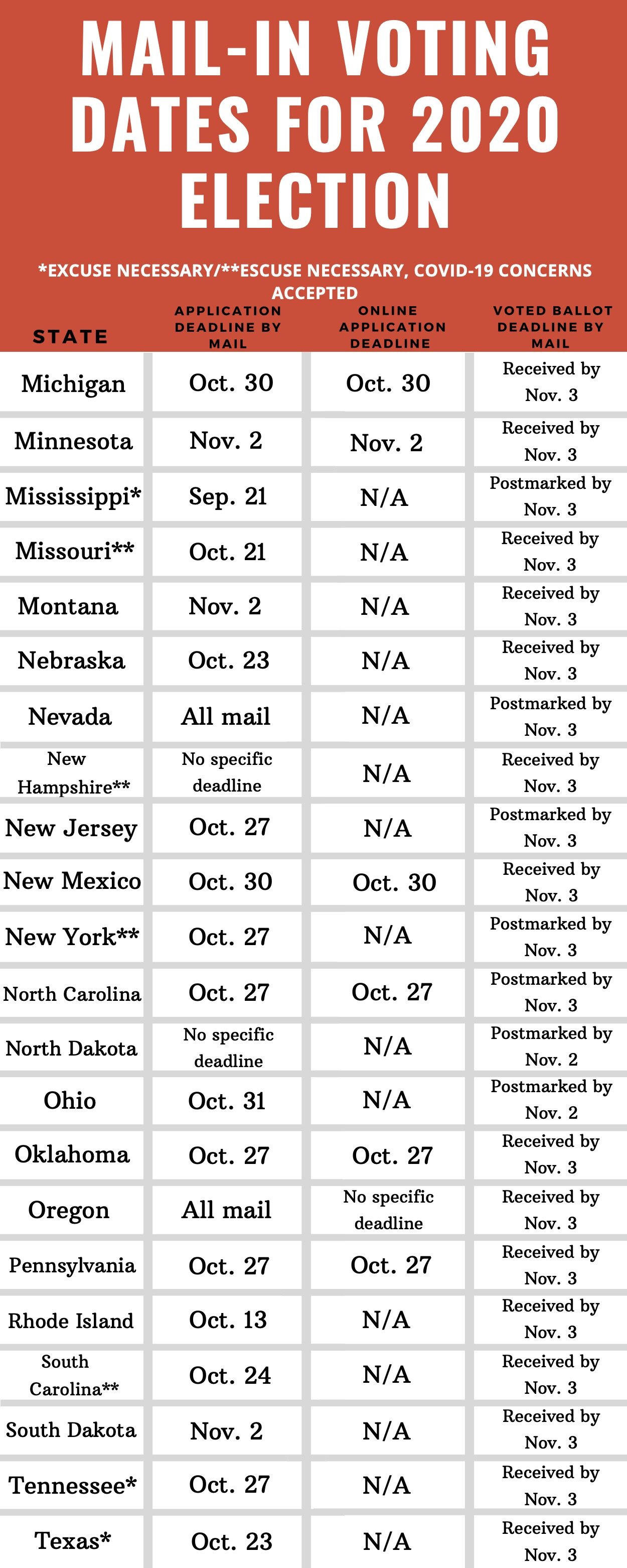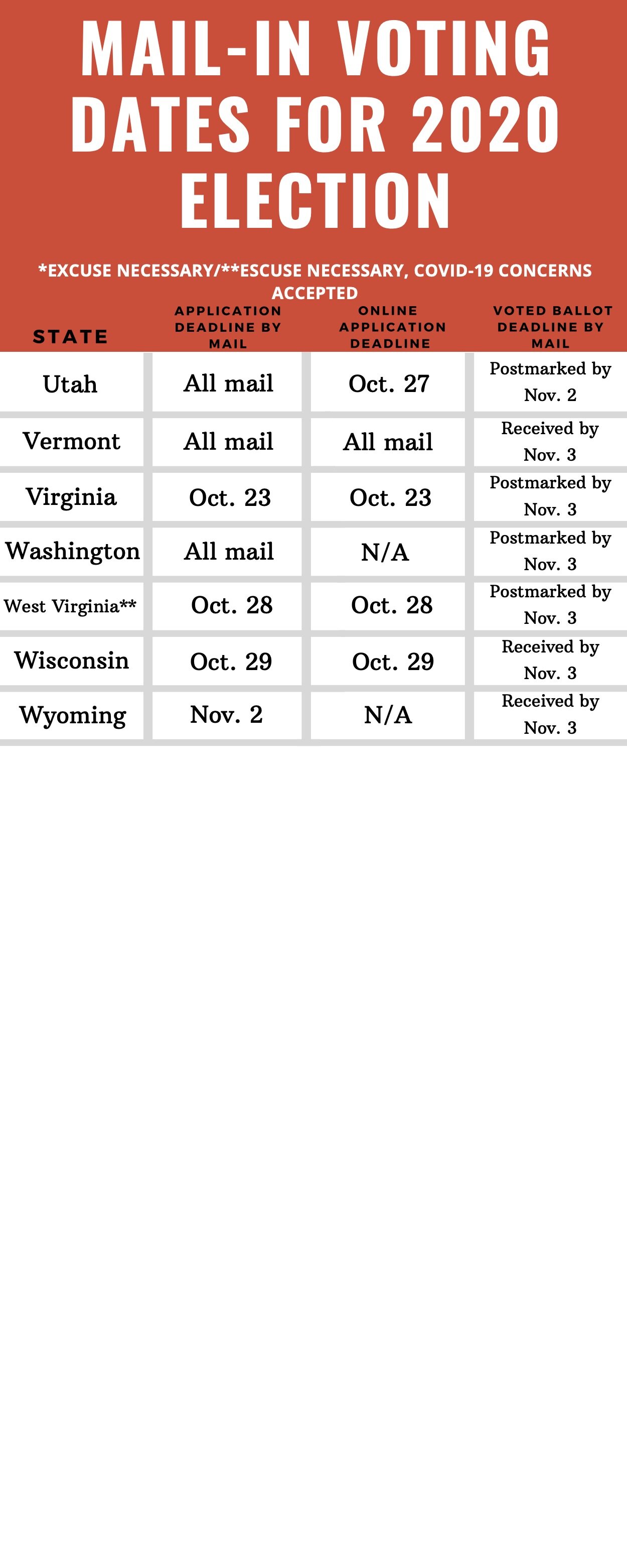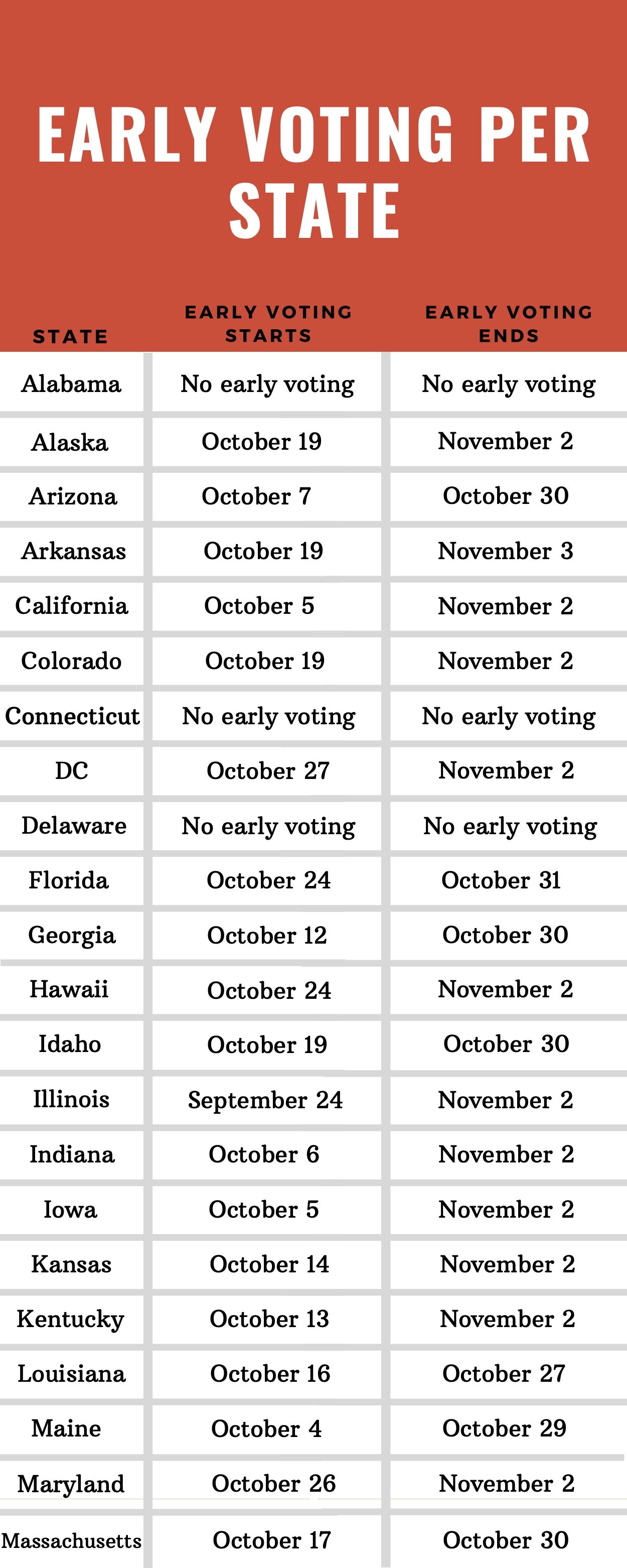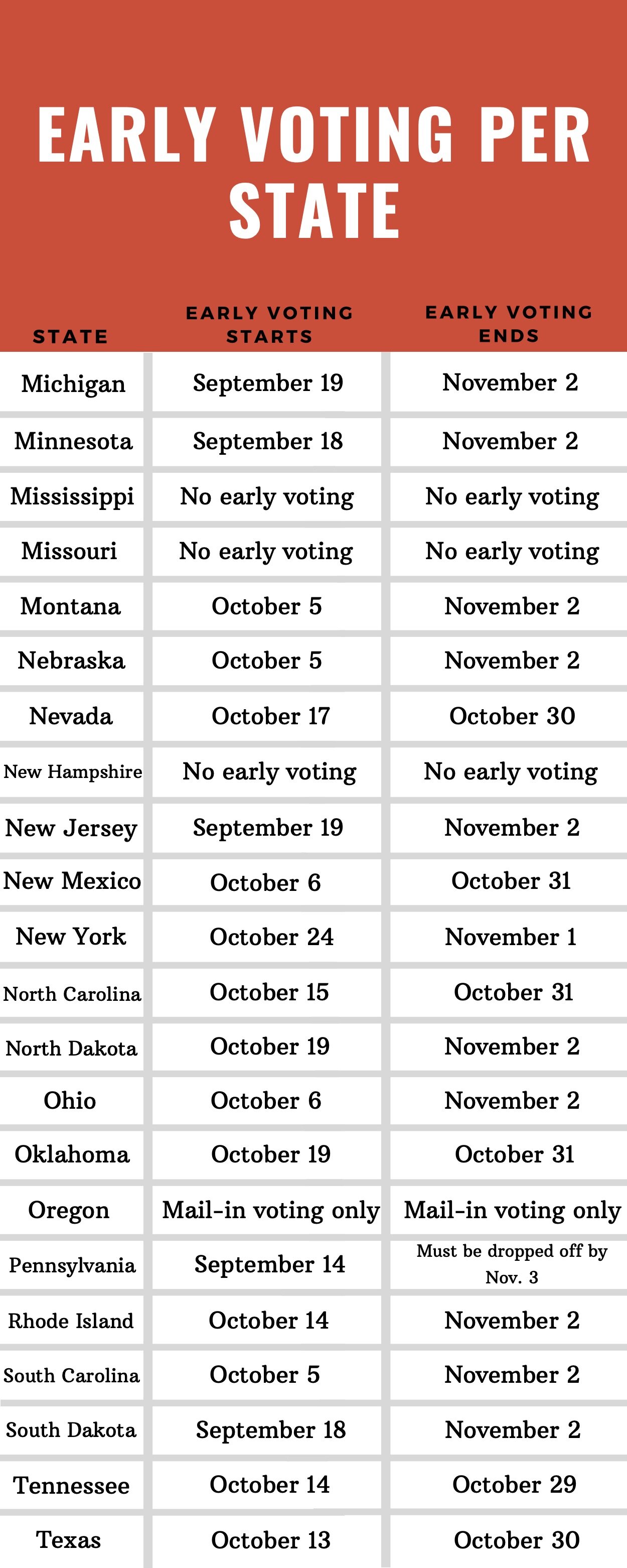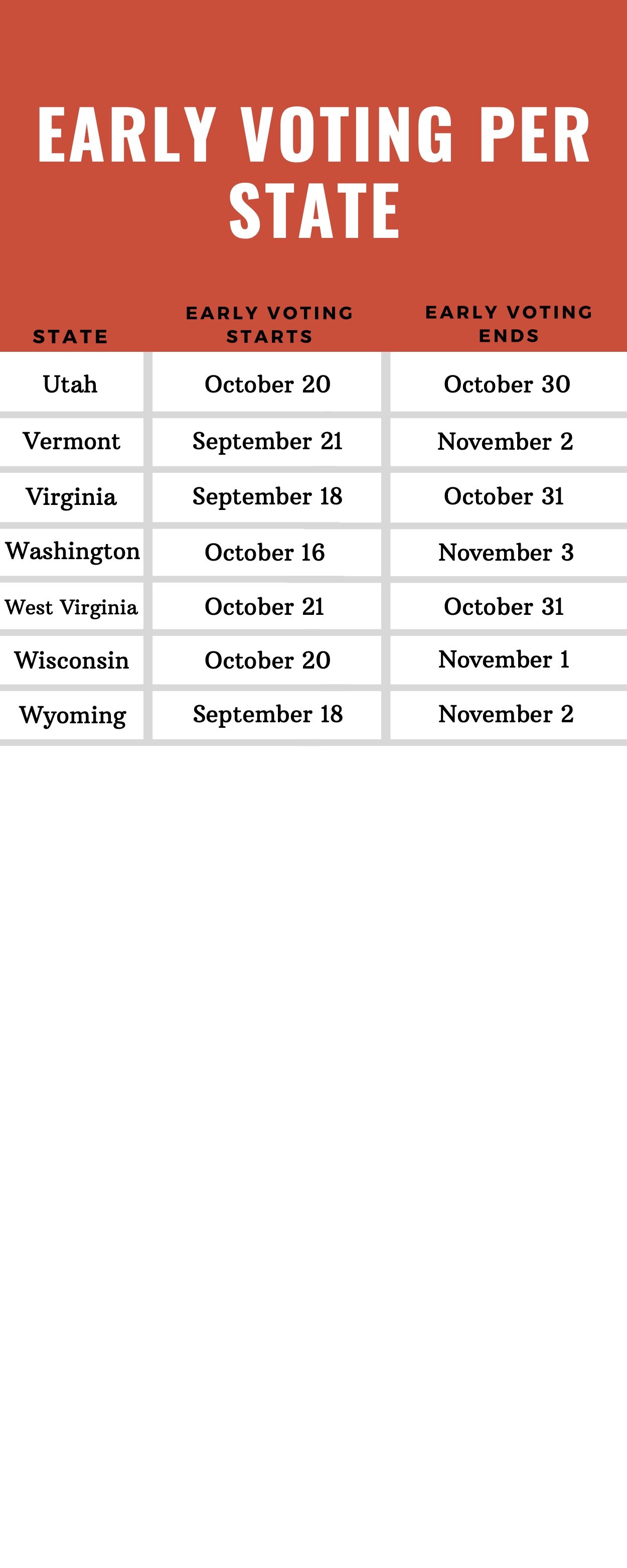Voting In 2020 - A Step By Step Guide
By: Charlotte Cook
In the midst of our global pandemic lies a crucial election. This year, it is imperative that every eligible American cast their vote, but with the implementation of widespread mail-in ballots, misinformation runs rampant. From biased envelopes to fear mongering to a lack of instructions, many citizens are confused as to how to get their vote in.
Over 90 million eligible voters (40% of the eligible voter population) did not vote in 2016. Younger voters (18-29 years old) consistently have the lowest turnout rate in the age demographic, with only 40-50% showing up to cast their vote in presidential elections. Election results can shape the country’s policies for years to come, many of which are particularly impactful to young voters. Student debt plans, job opportunities, and environmental policy are all huge components of a young voter’s future. Voter enthusiasm in this demographic may have the ability to swing the election, so it is imperative to get out and vote.
We at The Fem Word are here to help. Provided below are step by step instructions on how to vote in the 2020 election.
Step One: REGISTER
The registration process varies state by state, some of which require mail in registration or dropping an application off at an official building, but over 40 states including the District of Columbia permit online registration. Visit https://www.vote.org and fill out the “Register to Vote” option, which will have your registration information sent to you. Registering to vote only takes around 2 minutes! If you are planning on registering by mail, make sure to send your paper application far in advance of the deadline to ensure it is delivered. You can also use vote.org to double check if you are registered. Registration deadlines for each state may be found here: https://www.vote.org/voter-registration-deadlines/
Note: North Dakota has no voter registration and instead requires voters to show valid ID at the polls to vote
Step Two: REQUESTING AND VOTING WITH A MAIL-IN BALLOT (Optional)
Due to COVID-19, many states have expanded their absentee/mail-in ballot opportunities, with some even conducting the entire election by mail. You can request your mail-in ballot through https://www.vote.org, which will then send you information about requesting a mail-in ballot in your state. While most states have relaxed restrictions for mail-in ballots, Indiana, Louisiana, Mississippi, Tennessee, and Texas still require an excuse beyond a concern for COVID (you may check to see if you are still eligible). Other states, however, will send all or most registered voters a mail-in ballot. See the chart below to find out when your state will send you a ballot for registering (it also includes dates that states will start sending out 2020 ballots):
Once you have received your ballot, fill it out, making sure to closely read and follow the instructions (even a small mishap like checking an oval that is supposed to be filled in could get your ballot thrown out), and sign with your official signature (a missing or unverified signature and late arrival are the most common reasons for a ballot to be rejected). Return your ballot in a secrecy (unmarked) envelope (skipping this could also result in your ballot being thrown out) and then place it in a larger, separate mailing envelope and sign the exterior of it. If you're mailing it through the post office, address it to your local board of elections (many jurisdictions allow you to track your ballot as you would a package). You may also, if offered by your jurisdiction, turn in your ballot to a drop-off location, which could be a designated drop-box, a precinct, or a polling place. Dropping your ballot off at your local election official’s office is always an option, too. Your vote is private and cannot be accessed or altered by anyone.
The deadlines for mail-in applications are different in each state, but they are all fast approaching. States recommend requesting your ballot as soon as possible to ensure it is received on time. Some states will allow ballots to be received a few days following November 3rd, others, however, will not count those received after election day. State deadlines are listed below:
Step Three: VOTING IN-PERSON
Most states still offer in-person voting. https://www.vote.org offers a polling place locator for all states under “Polling Place Locator.” Ensure you bring everything you need to vote at your polling place:
Exact type of Photo ID required by your state (some states allow you to provide the last 4 digits of your social security number in lieu of a photo ID)
Proof of Registration (card or photo of confirmation)
Your district specific Sample Ballot (to make sure the polls give you the correct races for your district)
Proof of Residency (bank statement, utility bill, drivers license) if your state requires it
If you choose to vote early, be aware of the dates your state offers:
You can cast your vote early at a regular polling place (just as you would on election day) or drop off a paper ballot early at the state’s local election office (“in-person absentee” voting).
Otherwise, show up to your designated poll to vote on election day (November 3rd). Make sure to socially distance!
Step Four: PROVISIONAL BALLOTS (If your vote is challenged)
Provisional ballot eligibility:
Your name did not appear on the official voter list at the polling place despite you having registered
You voted by mail and instead want to vote at your polling place/vote center, but you did not receive your ballot or did not have your ballot with you (and the elections official is unable to verify that you have not returned your vote-by-mail ballot)
Your provisional ballot will be counted after election officials confirm you are registered to vote in that county and you did not already vote in that election. You may vote a provisional ballot at any polling place in the county that you are registered to vote, however, only the election contests you are eligible to vote for will be counted. You may find out from your county elections official if your ballot was counted and, if not, the reason why it was not counted.
Step Five…MAKE IT HAPPEN!
With less than 40 days left until election day, you should register and request your ballot NOW to ensure your vote is received. Remember, every vote counts, make your voice heard!
Article Bibliography:
https://www.msn.com/en-us/news/us/how-to-register-to-vote-in-the-2020-election/ar-BB19iKHE
https://www.businessinsider.com/when-will-i-get-november-absentee-mail-ballot-state-guide-2020-8
https://www.businessinsider.com/when-is-early-voting-in-each-state-2020-8
https://www.businessinsider.com/voter-registration-deadlines-by-state-2020-8
https://www.cnet.com/news/where-do-i-vote-how-to-find-your-polling-place-on-election-day-2020/
https://www.npr.org/2020/08/07/900210406/the-most-important-mail-youll-ever-send-a-ballot
The views, thoughts, and opinions expressed in this article belong solely to the author, and do not necessarily reflect the position of The Fem Word organization. Any content provided by our authors are based on their opinions and are not intended to malign any religion, ethnic group, club, organization, company, individual or anyone or anything.

